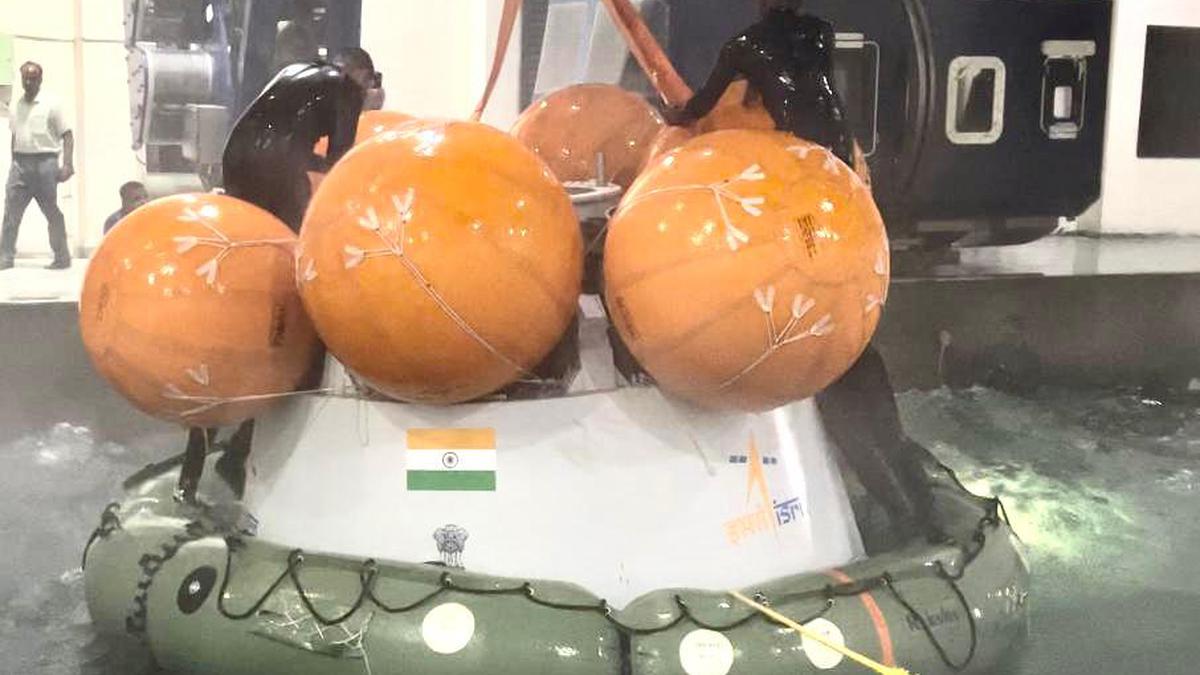
Navy, ISRO release training plan for Gaganyaan crew module
The Hindu
In a step towards reasoning India’s Gaganyaan mission, Indian Navy and Indian Space Research Organisation (ISRO) released Gaganyaan Recovery Training Plan at Water Survival Training Facility (WSTF) at INS Garuda, Kochi
In an important step towards reasoning India’s ambitious Gaganyaan mission to put an Indian in space, Indian Navy and Indian Space Research Organisation (ISRO) released the Gaganyaan Recovery Training Plan at Water Survival Training Facility (WSTF) at INS Garuda, Kochi. The human flight, after two unmanned flights, is scheduled to be launched in the fourth quarter of 2024.
“The document outlines the training plan for recovery of the Crew Module of the mission. It defines overall requirements with respect to training of various teams participating in recovery operations including divers, MARCOs (Marine Commandos), medical specialists, communicators, technicians and naval aviators,” the Navy said in a statement on May 26.
The recovery training is planned in incremental phases starting from unmanned recovery to manned recovery training in harbour and open sea conditions and are being led by the Indian Navy in coordination with other agencies, it stated.
The training document was jointly released by Vice Adm Atul Anand, Director General of Naval Operations, Dr Unnikrishnan Nair, Director, Vikram Sarabhai Space Centre, (VSSC) and Dr Umamaheshwaran R, Director, Human Space Flight Centre (HSFC) of ISRO.
The Crew Module Recovery Model was also formally handed over to the Indian Navy at its state-of-the-art WSTF at Kochi. The mass and shape simulated mockup will be used for familiarisation and training of Gaganyaan recovery teams, according to the Navy.
The Indian Navy will also assist ISRO by undertaking a series of trials to fine-tune the standard operating procedures for training the crew and recovery teams of Gaganyaan, the Navy added.
Earlier this month, the parachutes to ensure the safe landing of re-entry capsule carrying astronauts on Earth’s surface, developed by Agra-based Aerial Delivery Research and Development Establishment (ADRDE), a laboratory under the Defence Research and Development Organisation (DRDO), were shipped to ISRO facility in Bengaluru.













